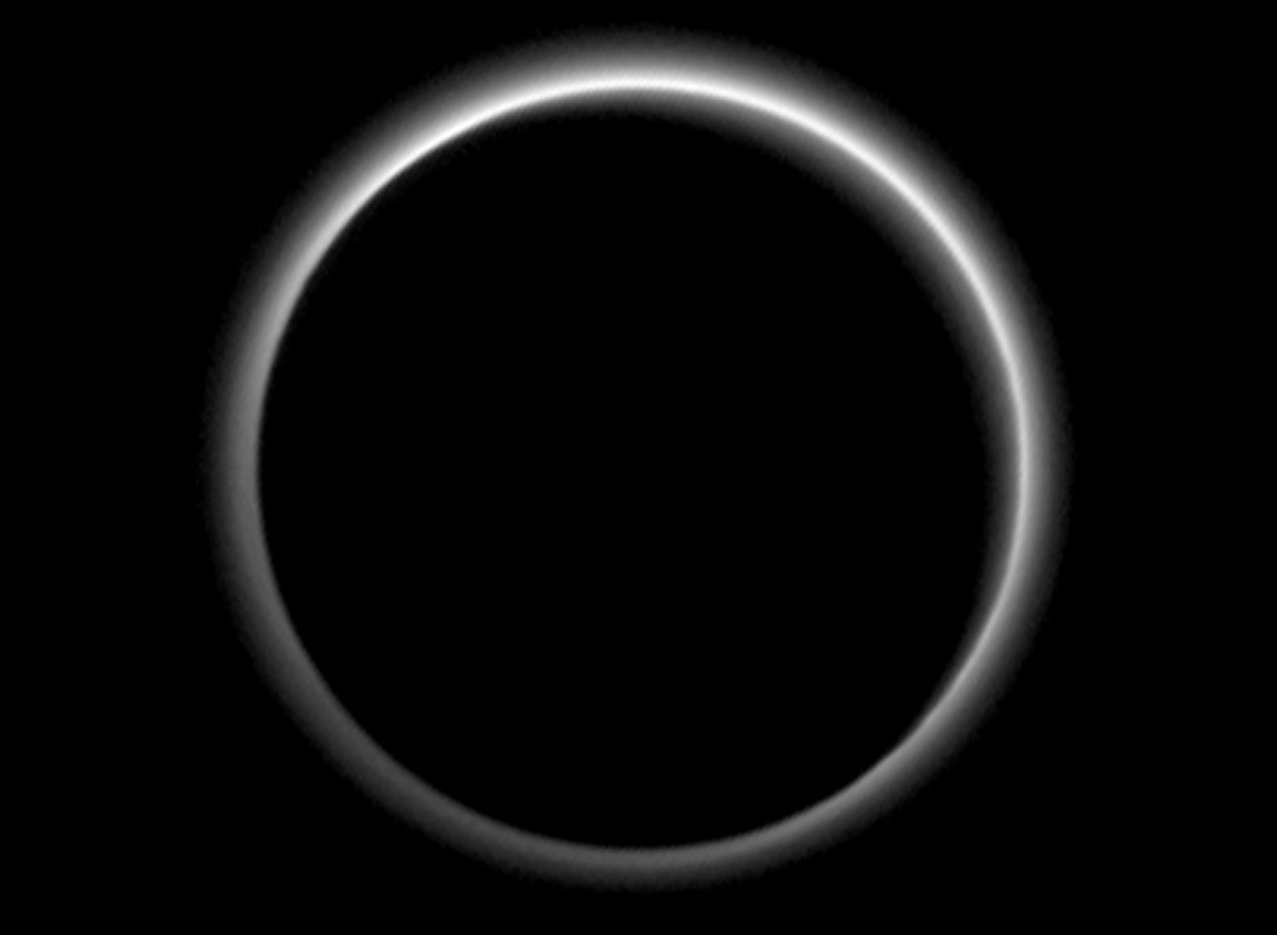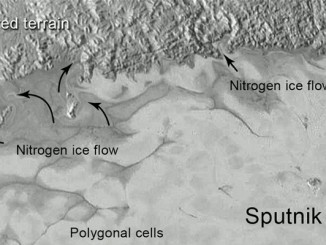
“My jaw was on the ground when I saw this first image of an alien atmosphere in the Kuiper Belt,” said Alan Stern, principal investigator for New Horizons at the Southwest Research Institute (SwRI) in Boulder, Colorado. “It reminds us that exploration brings us more than just incredible discoveries — it brings incredible beauty.”
Studying Pluto’s atmosphere provides clues as to what’s happening below.
“The hazes detected in this image are a key element in creating the complex hydrocarbon compounds that give Pluto’s surface its reddish hue,” said Michael Summers, New Horizons co-investigator at George Mason University in Fairfax, Virginia.
Models suggest the hazes form when ultraviolet sunlight breaks up methane gas particles — a simple hydrocarbon in Pluto’s atmosphere. The breakdown of methane triggers the buildup of more complex hydrocarbon gases, such as ethylene and acetylene, which also were discovered in Pluto’s atmosphere by New Horizons. As these hydrocarbons fall to the lower, colder parts of the atmosphere, they condense into ice particles that create the hazes. Ultraviolent sunlight chemically converts hazes into tholins, the dark hydrocarbons that color Pluto’s surface.
Scientists previously had calculated temperatures would be too warm for hazes to form at altitudes higher than 20 miles (30 kilometres) above Pluto’s surface.
“We’re going to need some new ideas to figure out what’s going on,” said Summers.



